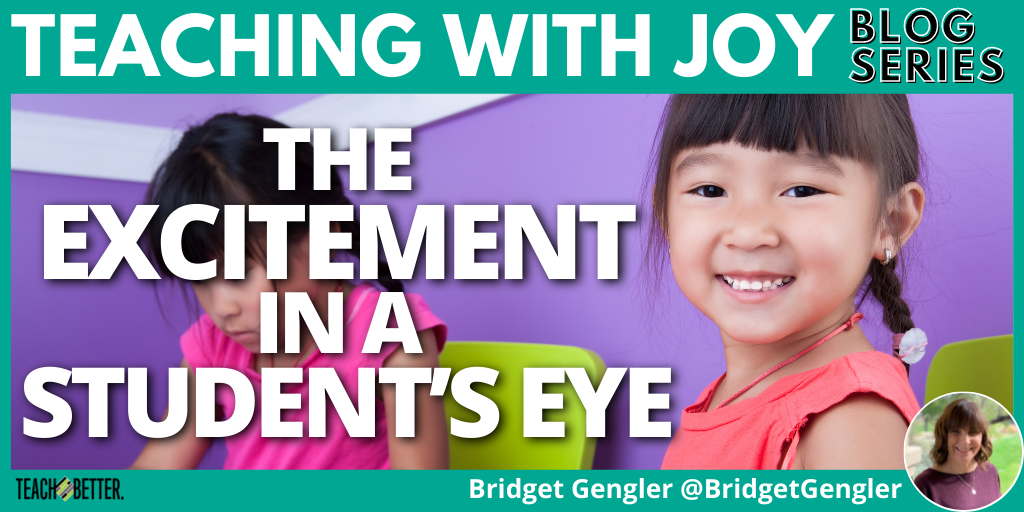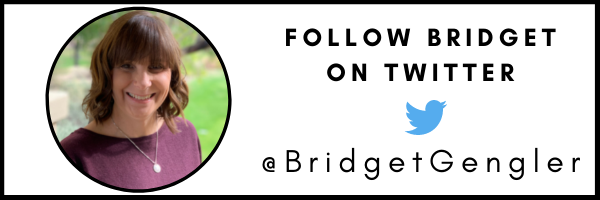TL;DR:
- Empowering students allows them to be leaders. It provides opportunities for them to be creative and innovative.
- Creating a safe space where students feel respected and heard is important in creating this environment.
- Providing opportunities for students to share, listen to others’ perspectives, lead, create, and follow their own interests empowers students.
Empowerment
Empowerment is defined as the process of becoming stronger and more confident in controlling one’s life (Oxford languages, 2022). If we think about our students, then empowerment would be the process of students becoming stronger and more confident in their learning. Empowering students creates leaders, critical thinkers, dreamers, and innovators. It puts students in charge of their learning and, in turn, makes them more confident and stronger in their abilities. What if we took engagement one step further and developed empowered learners within our classrooms? In Spencer and Juiliani’s book, Empower: What Happens When Students Own Their Learning, they discuss the difference between engagement and empowerment ( 2017).
Empowering students creates leaders, critical thinkers, dreamers, and innovators. It puts students in charge of their learning and, in turn, makes them more confident and stronger in their abilities. Click To Tweet- Engaged environments are attentive and committed to our curriculum, but empowered environments are attentive and committed to our interests.
- Engaged environments have teachers who are working to make it interesting, but empowered environments are teachers working on tapping into their interests.
- Engaged environments give choice, but empowered environments inspire possibilities.
- Engaged environments follow the beaten path, but empowered environments allow students to make their own path.
- Engaged environments consume, but empowered environments create.
- Engaged environments differentiate, but empowered environments personalize learning (Empower, Spencer & Juliani, 2017).
To See a Student
In Empower, John Spencer talks about his eighth-grade teacher whose influence shaped the way he teaches and parents. One day when he had all but given up on a project, she said to him, “I’m not going to let you get away with that. What you say matters. And when you choose to stay silent, you rob the world of your creativity” (Spencer & Juliani, Empower, p. 5).
Those are such powerful words for a student to hear. This teacher saw him and believed in him. She changed the way he thought of himself and his abilities. What if all educators could do that for their students? What if we could truly see them and work to empower them and allow them to see what we see. Allow them to gain confidence. This is what empowerment is. But as educators, how do we get there?
My Goal to Empower
My goal during each school year is for my students to leave my classroom at the end of the year more confident, more successful, and more empowered. I want them to feel like they can make a difference in the world. There are many ways that I try to achieve that goal throughout the year. I spend the first semester of the school year creating a foundation for them to spread their wings and then have the ability to fly in the second semester.
Leader of the Day
At the beginning of the school year, I begin Leader of the Day. There is a new leader each day. The leader begins our day with our morning meeting. They perform a daily check-in with all of the students. The check-in is meant for us to see who we need to encourage, but it also is a time for each student to reflect on how they are feeling on that particular day. The leader then shares a fun fact, introduces a joke or puzzle of the day, and polls the class with a question of the day. They also start a discussion on a social-emotional topic.
At the beginning of the school year, not all students are comfortable being leaders; but by the middle of the year, they all willingly take on this leadership role with confidence. Leader of the Day empowers the students to be brave and step out of their comfort zones. Once they perform this task once or twice, they realize how it’s not so scary. It makes them feel comfortable in front of their peers. In addition, a safe environment is established. An environment where they feel supported and confident to lead the group. This sense of security leads to empowerment.
Weekly Debates
We begin the year with weekly debates. This gives the students a chance to share their opinions and perspectives on a topic. I try to create as safe an environment as possible for them to share their voices. These opportunities allow the students to begin to learn that they have a voice. Developing that voice empowers them. It empowers them to think critically, share their voices, and listen to other perspectives.
Socratic Seminars
After spending some time with debates, and seeing that most students understand what it means to share their voice, I introduce the Socratic Seminar. Socratic Seminar is a formal discussion based on a text. When I introduce it, we talk about the difference between dialogue versus debate. Socratic Seminar is about dialogue. It is about allowing others to share their opinions and perspectives. It is about listening to each other and honoring and respecting each other’s perspectives.
Just like debates, Socratic Seminars can empower the voices of the students. The part of the Socratic Seminar that is so important is the ability to listen without judgment. This leads to empowerment also. It enables the children to see there are more sides and perspectives than their own. It allows them to learn how to respect differences they may see in other people. The power of voice and the power of perspective leads to the empowerment of the mind.
Presentations
Leader of the day, debates, and Socratic Seminar create a comfort zone for students to present in front of the class. They are used to speaking in front of the group and hopefully, they have gained a bit of empowerment to share their voices. They have gained some trust in their classmates and know it is a safe place to be. Whether they are doing a group presentation or a solo presentation, they have a sense of safety and comfort. The leadership and honoring of their voices has helped them to gain a feeling of empowerment. They really feel that they can think freely and share without judgment.
Student Jobs
Student jobs in the classroom are another way to increase empowerment and create leadership skills. When I introduce jobs in my class, I emphasize to the students how important the job is. I emphasize that in our jobs, we take them seriously and always strive to do our best. I also talk about how when we do our best, this means that we are self-motivated. We do not have to wait for someone to tell us to do the job, we just do it. This definitely creates empowerment.
On a daily basis, I sit and observe my students do their jobs, and rarely do I need to remind them. They take on the initiative to complete the job.
What a sense of empowerment this creates in our classroom community.
Morning Meetings
Our morning meetings are a time for my students to share their voices. These moments are empowering because they get to listen to multiple perspectives on a topic. It allows them to take risks and step out of their comfort zones. Depending on the topic, sometimes I have students really open up about something, and they feel empowered because they feel supported.
Book Clubs
Book clubs are another way to create empowerment. They are based on choice. The students get to choose the book that they want to read. The book clubs are formed by their choices. Students plan together on what they will read each week, and they choose roles that they will take on as readers. Throughout the week, they complete the reading and individual roles. They meet once a week. The weekly meetings are full of enthusiasm, inquiry, and critical thinking. The roles they have help to create dialogue as they discuss the chapters that were read. This dialogue centers around different perspectives. They each bring a variety of schema and experiences to the text. The students feel a sense of empowerment when they meet. The ability to have a choice engages them more and, in turn, moves that engagement to the level of empowerment.
[scroll down to keep reading]
Passion Projects
Passion projects are completely student-led. I begin by walking them through a path to find their passions and then narrow those topics down to two. They create burning questions around each topic that they want to explore. Then it is narrowed down to the sole topic and burning question.
They are given an hour a week to work on their passion project. They research their question and create a product to present to the class.
This is ultimately one of the most empowering learning experiences for the students because it is all student-led. They are in the driver’s seat on this one. I am only the facilitator. Student choice is a key factor in true empowerment in the classroom.
All of these ways to empower create confident and inspired learners who hopefully leave my class with skills to build upon in the following years of learning.
My Spark of Joy
I find that much of my joy in teaching comes from seeing the excitement in students’ eyes when they feel like they have accomplished something all on their own. When they can see how their own actions have played a part in their learning. I love to see their confidence increase when they feel that what they are doing is valued and important. That simple spark of joy comes from the ability to create opportunities for my students to feel empowered and in charge of their learning.
About Bridget Gengler
Bridget Gengler is a fourth grade teacher in Long Beach, California. She has taught bilingual education, general education, and GATE for the past 26 years. She’s passionate about building relationships and a strong classroom community that opens up doors of success for her students. She strives to empower all students to share their voices and their stories. Her class motto is “ You matter! You are important! You have a story to tell and we want to hear it!” She brings her love of reading and writing to the classroom in the hopes that it will promote lifelong readers and writers.
Bridget believes that self-care is essential in an educator’s life. She takes time to focus on gratitude, mindfulness and kindness during the day. She contributes this balance to her success in the classroom.
Family is number one for her! Her most precious job is being a mom to four young adults, an energetic lab puppy, and a wife to a wonderful husband. When she is not teaching, writing or reading she is creating memories with them. They love to travel, discover new restaurants, and watch professional baseball.




